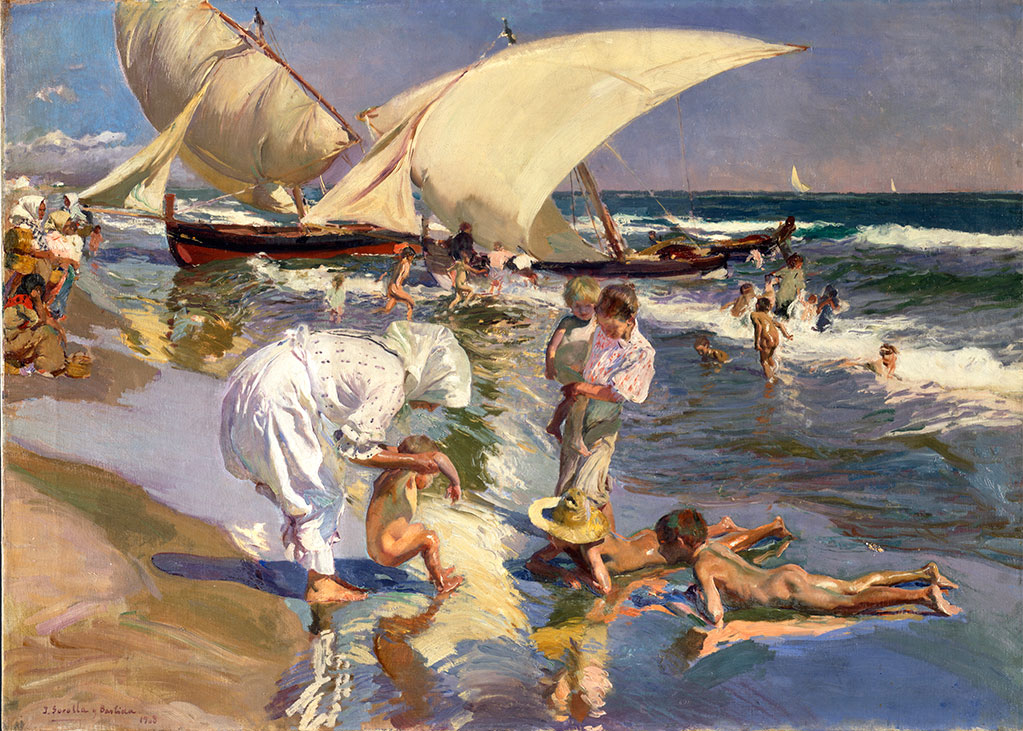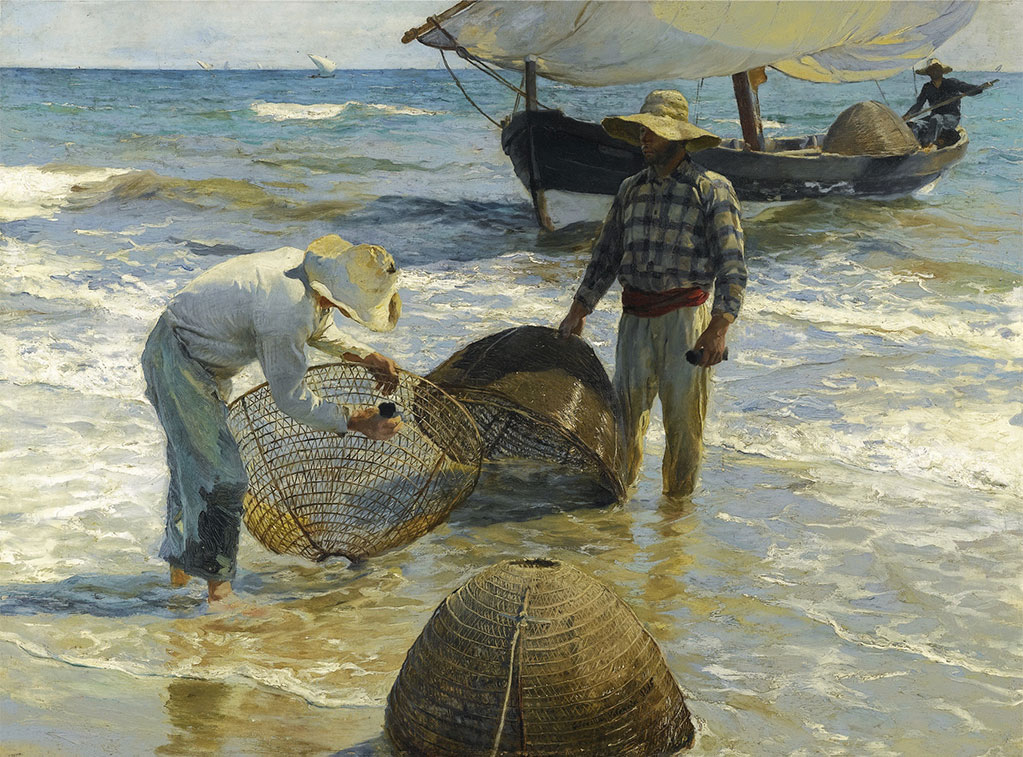A sea of infinite colours: Sorolla reveals the Mediterranean
Nobody has painted the Mediterranean like Joaquín Sorolla (1863-1923). He worked tirelessly in a ceaseless pursuit of just the right colour. Efforts that bring the scenes in paintings to life, transmitting the warmth of a sunny day by the sea.
It’s all about the gaze
Under the bright sun and with his easel planted in the sand, Sorolla observed fleeting moments which most often went unnoticed by his contemporaries. He made sketches with absolute expressive freedom, and eventually managed to develop the right technique for capturing everything he could see, intuit and experience. Thus, he succeeded in immortalizing on canvas the reflections of the sun on the sea, the different degrees of transparency and texture of moving water.
One only has to look at how he handled the effects of refracting light in paintings like El balandrito (The Little Ferry, 1909). Sorolla understood that you have to learn to look at reality before you can paint it. As he would say, “I always paint with my eyes”.

El balandrito (The Little Ferry), 1909. Oil, 100 x 110 cm. Sorolla Museum, Madrid (Spain). ©wikicommons
A constantly shifting landscape
The sea is not a landscape that lends itself easily to be painted. Constantly in motion, it is likely to change according to the vibrations of the light and the path the sun takes on the horizon. It can be completely transformed according to the time of day and the location.
If there is one location that defines Sorolla’s paintings, it is the one between the Cabañal and Malvarrosa beaches in Valencia. This light-filled area, steeped in memories of the artist’s childhood, is the true star of such iconic examples of Sorolla’s style as El baño del caballo (The Horse’s Bath, 1909) o Paseo a orillas del mar (Walk on the Beach, 1909).

El baño del caballo (The Horse’s Bath), 1909. Oil on canvas, 205 x 250 cm. Sorolla Museum, Madrid (Spain). ©wikicommons
What colour is the sea?
When we think of Sorolla’s paintings we think of the “blue of the Mediterranean”. But there are infinite shades of colour in his work: vermilions, violets, emerald greens, Naples yellows and Venetian reds.
Of course, pure water has no colour, but sea water has particles in suspension that can change colour with shifting light and temperatures. Sorolla was able to parse out these variations, which is why his blues glow with cobalt, Prussian blue and ultramarine, among other shades. The result can be seen in works such as La playa de Valencia, luz matinal (Valencia Beach in the Morning Light, 1908).

La playa de Valencia (Valencia Beach in the Morning Light), 1908. Hispanic Society of America, New York. ©wikicommons
Painting the intangible
More than just light is showcased in a Sorolla painting. His seascapes also capture the breeze and the warmth of the sun, and we even know that a scene like Pescadores valencianos (Valencian Fishermen, 1895) embodies the smell of salt and the crashing of the waves on the sand.

Los Pescadores Valencianos (Valencian Fishermen), 1895. Oil on canvas, 65 x 87 cm. Private collection. ©wikicommons
The reality of a Sorolla painting doesn’t just dazzle us with its technical quality. His work conjures up memories and feelings of summers lived or dreamt of. This is possible because the artist knew how to sense all those moments for himself and had the brilliant foresight not to let them slip away: “You have to paint quickly, because so much is lost, fleeting, and never to be found again!”
Sorolla’s secrets
How does you learn to observe a landscape? How do you capture a moving form? The answers can be found in two ARTIKA books dedicated to the painter of light: El mar de Sorolla (Sorolla’s Sea) and El paisaje de Sorolla (Sorolla’s Landscapes).
These two editions (now out of print) illustrate how the artist gave form to his ideas. These are the drawings through which he developed his artistic vision and refined the spontaneity and precision of his brushwork.

